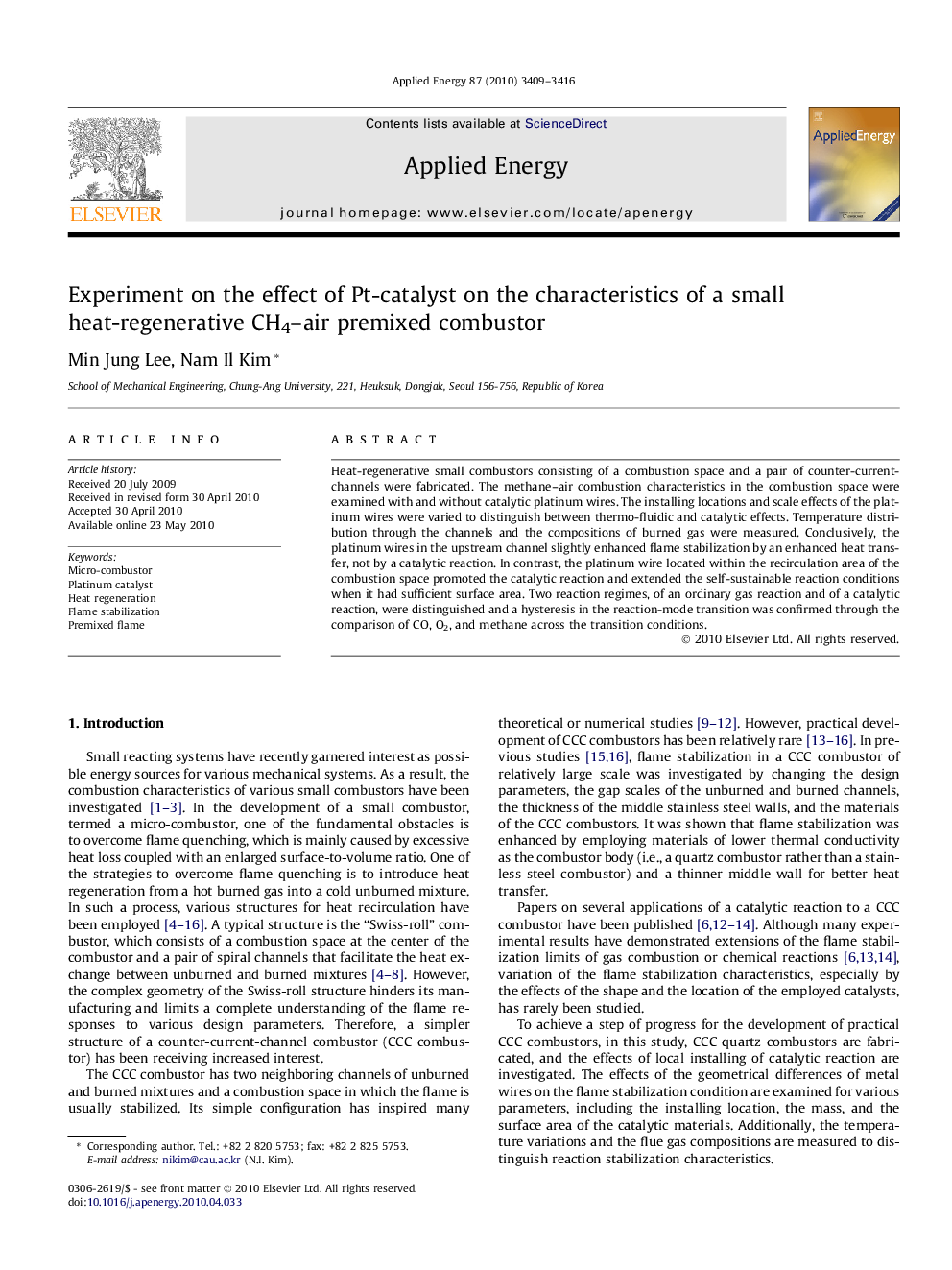| Article ID | Journal | Published Year | Pages | File Type |
|---|---|---|---|---|
| 244543 | Applied Energy | 2010 | 8 Pages |
Heat-regenerative small combustors consisting of a combustion space and a pair of counter-current-channels were fabricated. The methane–air combustion characteristics in the combustion space were examined with and without catalytic platinum wires. The installing locations and scale effects of the platinum wires were varied to distinguish between thermo-fluidic and catalytic effects. Temperature distribution through the channels and the compositions of burned gas were measured. Conclusively, the platinum wires in the upstream channel slightly enhanced flame stabilization by an enhanced heat transfer, not by a catalytic reaction. In contrast, the platinum wire located within the recirculation area of the combustion space promoted the catalytic reaction and extended the self-sustainable reaction conditions when it had sufficient surface area. Two reaction regimes, of an ordinary gas reaction and of a catalytic reaction, were distinguished and a hysteresis in the reaction-mode transition was confirmed through the comparison of CO, O2, and methane across the transition conditions.
